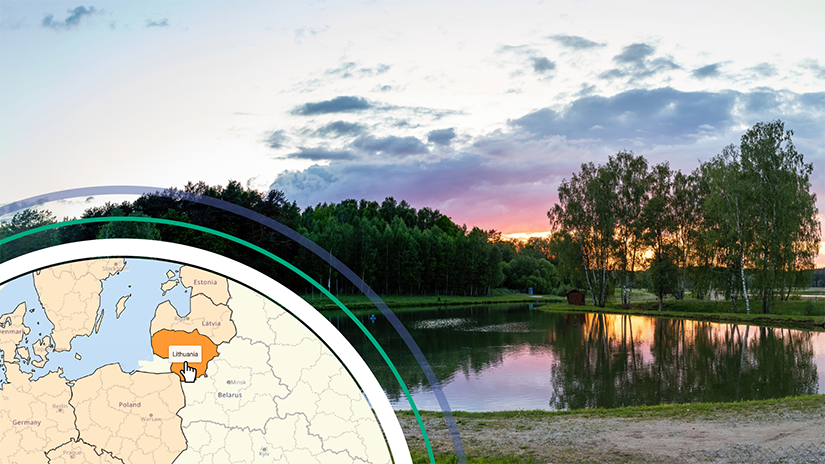Background information

Type of species farmed
Common carp (Cyprinus carpio), rainbow trout (Oncorhynchus mykiss), North African catfish (Clarias gariepinus), European eel (Anguilla anguilla), Arctic char (Salvelinus alpinus), tilapia (Oreochromis spp.).
Source: 2024, STECF
Sector’s size (production and consumption)
Source: 2024, STECF
Trends (past and future)
Current trends in Lithuanian aquaculture are related to the development of RAS aquaculture systems to produce more higher value species and increase production assortment. The second important driver of value for aquaculture production is increasing vertical integration between farming and processing. In 2022 around 31% of total production for final consumption was sold as processed.
Source: EuroFish; 2022, ADC
Impact of aquaculture in the country’s economy, food market and labour market
- The most commonly farmed species is carp, representing around 56% of total production value. In terms of production value, the most important species after carp is North African catfish, sturgeon and European eel.
- In 2022, 86% of total aquaculture production was sold on the domestic market. The main export market for Lithuanian aquaculture production was Poland and Latvia, corresponding to the 70% and 23% of total exports respectively.
- Lithuanian processing sector is important due to its economic size and employment rate.
Source: EuroFish; 2022, ADC
Challenges and opportunities
- The aquaculture sector aims to increase energy efficiency and renewable energy use in pond and RAS aquaculture and to encourage the overall use of recirculation aquaculture systems.
- Farming of a wider variety species that can open new markets and fetch higher prices, while preserving traditional extensive aquaculture and organic production, is also a priority.
- The development of pond aquaculture is linked to the utilisation of untapped production potential and diversification of production by increasing the production of valuable species.
- A receptive internal market for fresh fish and its products.
- An increase in demand for organic or higher quality food, in a context of changing dietary habits of consumers.
- The country’s water resources are relatively high.
- Favourable natural conditions (including clean groundwater) and engineering infrastructure for the development of RAS.
- Shortening supply chains.
- Growing focus on the development of the aquaculture sector in both EU and Lithuanian fisheries policy, in line with the European Green Deal and Farm to Fork policy orientations.
- Scientific and technological progress to improve the production of existing and new bio-based products in aquaculture.
- Building on the international experience of innovation in aquaculture.
- Networking between policy makers, producers, consultants, researchers and consumers.
- Ecosystem services such as attractive landscapes, rich biodiversity, healthy habitats, growing demand and consumer readiness to pay for these services.
- Growing demand for local tourism and recreation services, an attractive aquaculture pond environment for recreation.
- Untapped energy efficiency potential, development of renewable energy sources.
- Opportunities for breeding of new fish species in the context of climate change.
Source: EuroFish and MNSPA
Employment and number of enterprises
431 employees in 2022
Source: 2022, ADC
Multi-annual National Strategic Plans for the development of sustainable Aquaculture
Relevant Authorities
Applicable Legislation
Applicable Procedures
- Permit to keep wild animals in captivity issued by the Environmental Protection Agency
- Veterinary approval number issued by the State Food and Veterinary Service (SFVS)
- Water abstraction permit and permit for the management and discharge of waste water issued by the Environmental Protection Agency
- Environmental Impact Assessment (EIA), if applicable
(Source: MNSPA)
Other Relevant Documents
National associations and networks
Relevant Websites
Contact Details
Ministry of Agriculture of the Republic of Lithuania
Loreta Brazinskaite, Advisor to the Fisheries Unit
- Telephone number: +370 5 239 8422
